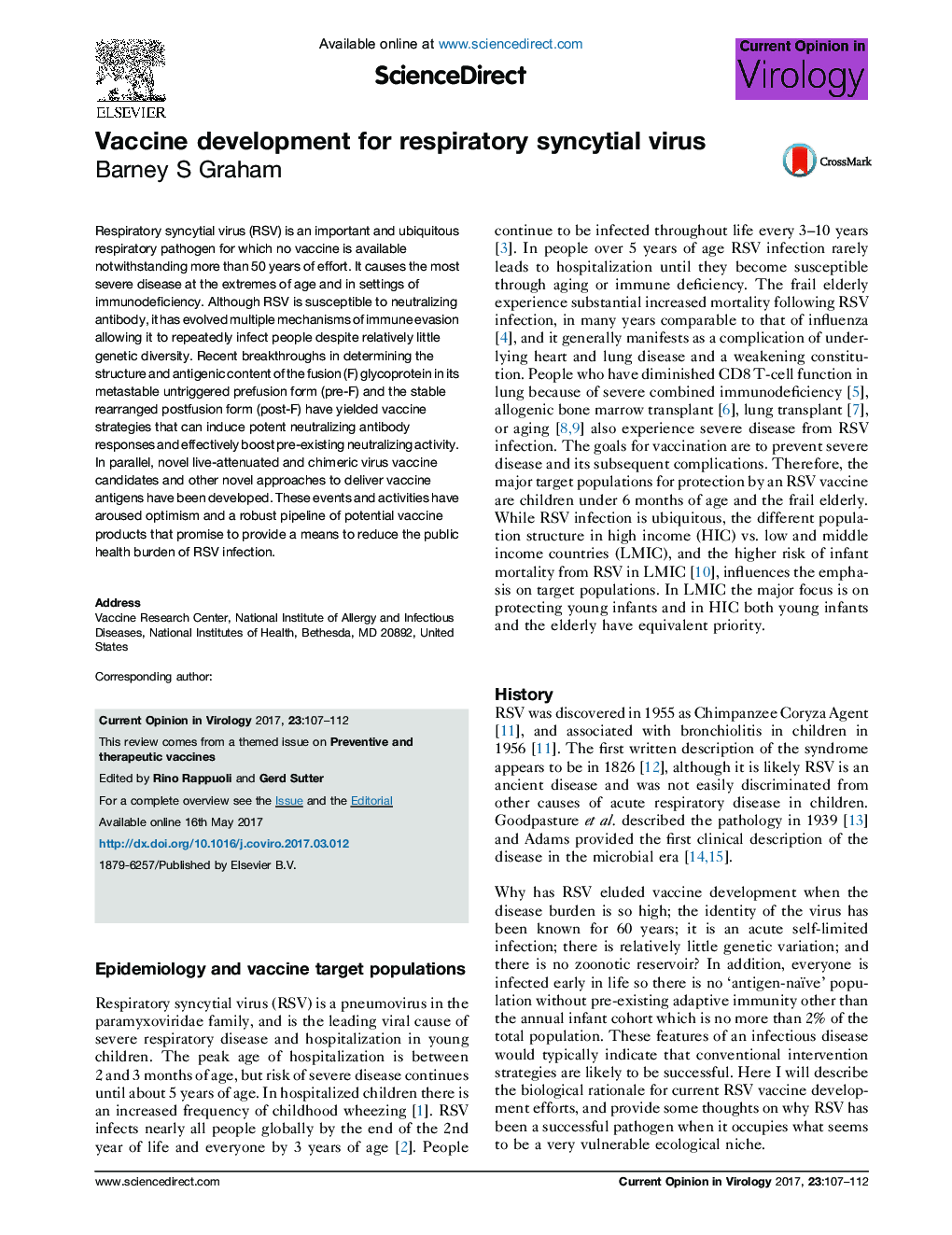| Article ID | Journal | Published Year | Pages | File Type |
|---|---|---|---|---|
| 5546147 | Current Opinion in Virology | 2017 | 6 Pages |
â¢RSV is an important cause of lower respiratory tract infection and disease at the extremes of age.â¢The RSV fusion (F) glycoprotein is the major target for virus neutralizing antibodies.â¢Recent breakthroughs in defining the structure of F in its prefusion state identified new neutralization-sensitive epitopes.â¢Stabilizing F in the prefusion conformation improves immunogenicity and is the basis for a leading candidate vaccine antigen.â¢Structure-based vaccine antigen design and other technological advances have made vaccine development for RSV and other viral diseases more feasible.
Respiratory syncytial virus (RSV) is an important and ubiquitous respiratory pathogen for which no vaccine is available notwithstanding more than 50 years of effort. It causes the most severe disease at the extremes of age and in settings of immunodeficiency. Although RSV is susceptible to neutralizing antibody, it has evolved multiple mechanisms of immune evasion allowing it to repeatedly infect people despite relatively little genetic diversity. Recent breakthroughs in determining the structure and antigenic content of the fusion (F) glycoprotein in its metastable untriggered prefusion form (pre-F) and the stable rearranged postfusion form (post-F) have yielded vaccine strategies that can induce potent neutralizing antibody responses and effectively boost pre-existing neutralizing activity. In parallel, novel live-attenuated and chimeric virus vaccine candidates and other novel approaches to deliver vaccine antigens have been developed. These events and activities have aroused optimism and a robust pipeline of potential vaccine products that promise to provide a means to reduce the public health burden of RSV infection.
